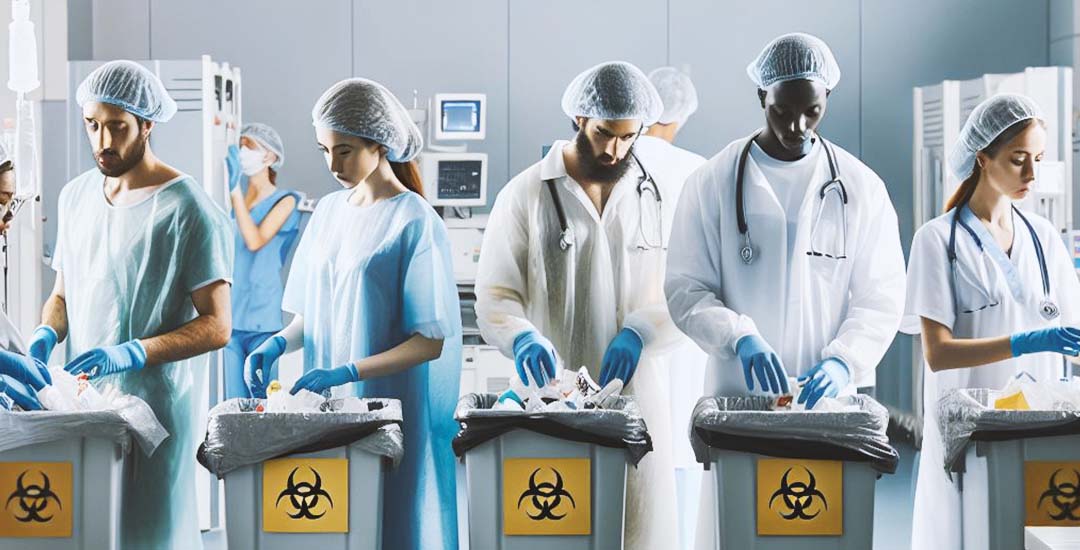
The Importance of Understanding Medical Waste: Protect Yourself While in the Hospital
EnvidataID, Semarang – Medical waste is waste from medical service activities that contain hazardous, infectious, and toxic materials. Medical waste can come from various medical activities, such as research, testing, diagnosis, immunization, and human care. Medical waste can be classified as hazardous and toxic waste (B3) which can have a negative impact if the environment and living things are contaminated. Medical waste can be in the form of solid, liquid, and gas waste.
Some examples of medical waste include:
- Sharps waste: such as syringes, razors, and other sharp objects.
- Linen from infectious disease cases.
- Human body tissues, both infected and uninfected.
- Animal carcasses or tissues from the laboratory.
- Disposable bed-pam linings, urinals, incontinence-pads, and stamage bags.
Hospitals as health service facilities where sick and healthy people gather, can be a place for disease transmission and allow environmental pollution and health problems to occur. Every health service facility, whether carried out by individuals or companies, must produce waste. Hospital waste or garbage is all garbage and waste produced by hospital activities and other supporting activities.
Proper management in the stages of collection, separation, storage, transportation and processing of waste must be carried out properly and safely to prevent hospital nosocomial infections. Diseases such as hepatitis B, hepatitis C and AIDS also deserve attention regarding proper hospital waste management. People who are involved in the management of this medical waste are at risk, when performing types of hospital services. This can be prevented by public awareness of the dangers of hospital waste.
Management of medical waste from health services has complex problems. This waste needs to be managed in accordance with existing regulations so that environmental management must be carried out systematically and sustainably. Planning, implementation, and continuous improvement of health center management must be carried out consistently.
Dangers of Medical Waste
If not managed properly, medical waste can cause various hazards, including:
- Infectious diseases: Infectious waste can be a source of transmission of infectious diseases, such as hepatitis B, hepatitis C, HIV/AIDS, and tuberculosis.
- Nosocomial infections: Medical waste can cause infections in health workers and patients.
- Environmental pollution: Medical waste can contaminate soil, water, and air, thus negatively impacting human health and ecosystems.
- Explosions and fires: Chemical and radioactive waste can explode or burn if not stored properly.
Medical Waste Management
- Sorting: Medical waste must be sorted based on its type and level of hazard.
- Collection: Sorted medical waste is collected in tightly closed and specially marked containers.
- Storage: Collected medical waste is temporarily stored in a safe place and in accordance with requirements.
- Transportation: Stored medical waste is transported to the final processing site using special vehicles.
- Processing: Medical waste is processed using various methods, such as autoclaving, incineration, and chemical decontamination.
Source: envidata.id
Asmadi. (2013). Pengelolaan Limbah Medis Rumah Sakit. Yogyakarta: Gosyen Publishing.
Depkes RI. 2004. Keputusan Menteri Kesehatan Indonesia Nomor1204/MENKES/SK/X/2004 Tentang Persayaratan Lingkungan Rumah Sakit. Jakarta: Departemen Kesehatan RI.

